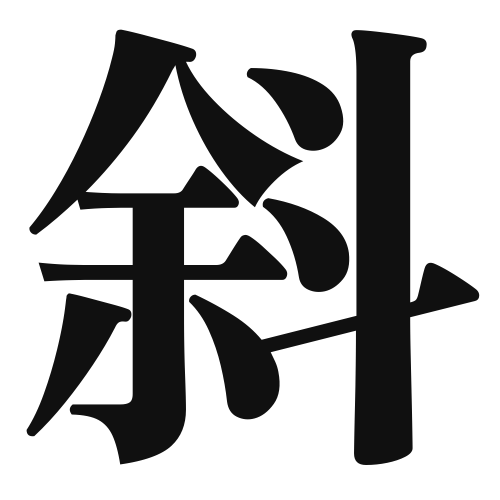1. Overview of Meaning
The kanji “斜” (sha) means “slant” or “oblique.” It describes something that is not straight or is tilted at an angle.
2. Formation and Radical
Formation of the Kanji: The kanji “斜” is a phonetic-ideographic character (形声文字). It combines the meaning of “斜” (slant) with a phonetic component that suggests its pronunciation.
Radical: The radical for “斜” is “斜” itself, which relates to slanting or tilting.
3. Examples of Usage
Common Words and Phrases:
- 斜め (naname) – slanting, diagonal
- 斜線 (shasen) – diagonal line
Example Sentences in Daily Conversation:
- この絵は斜めに描かれています。 (Kono e wa naname ni kakareteimasu.) – This painting is drawn at an angle.
- 斜線を引いてください。 (Shasen o hiite kudasai.) – Please draw a diagonal line.
4. Synonyms and Antonyms
Similar Kanji:
- 傾 (kei) – to lean or incline, which has a similar meaning but often implies a more pronounced tilt.
Opposite Kanji:
- 直 (choku) – straight, which represents the opposite of slanting or tilting.
5. Cultural and Historical Background
Relation to Japanese Culture: The concept of “斜” is often used in art and design, where balance and angles play a crucial role. It reflects the aesthetic appreciation of asymmetry in Japanese culture.
Proverbs and Idioms: There are expressions like “斜に構える” (nana ni kamaeru), which means to take a slanted or unconventional approach to something, often used to describe a unique perspective or attitude.
